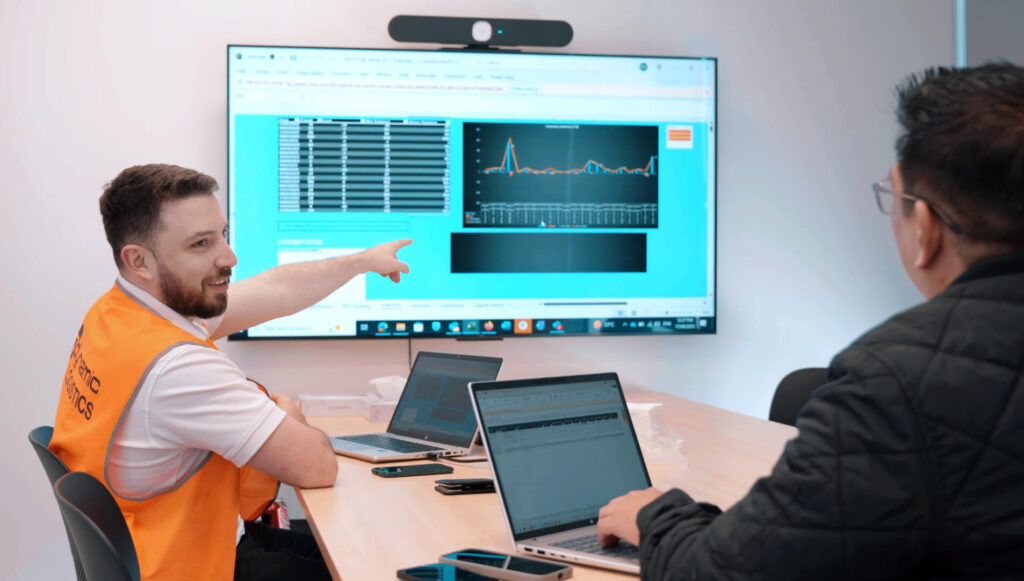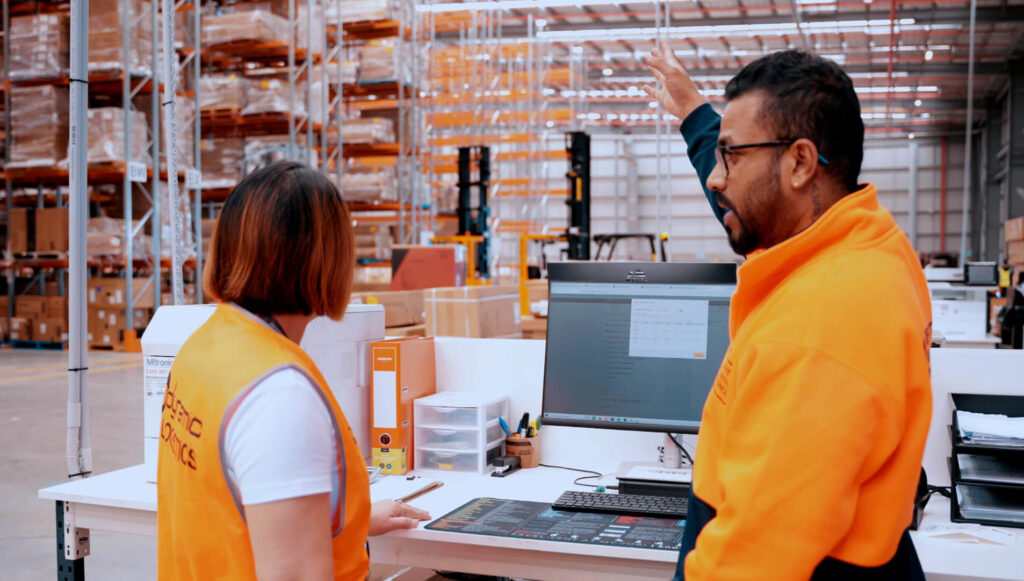
In today’s rapidly evolving e-commerce landscape, where online retail sales are projected to reach $8.1 trillion globally by 2026, choosing the right 3PL partner has become a make-or-break decision for ambitious online businesses. The complexity of modern logistics demands more than just shipping boxes – it requires a strategic approach to fulfilment that can adapt to changing customer expectations whilst maintaining cost efficiency. Whether you’re scaling up from your garage or looking to optimise an established e-commerce operation, selecting the ideal third-party logistics provider will determine your ability to compete in an increasingly demanding marketplace. This comprehensive guide will walk you through the essential considerations for partnering with a 3PL that aligns with your business goals and growth trajectory.
What Exactly is a Third Party Logistics Provider
A Third-Party Logistics provider, commonly known as a 3PL, is essentially a specialised partner that takes over the complex task of managing your inventory, order fulfilment, and shipping operations, allowing you to focus on growing your business rather than wrestling with logistics challenges. These fulfilment partners offer a comprehensive suite of services including warehousing, inventory management, picking and packing, and shipping coordination – essentially becoming an extension of your business that handles everything from the moment your products arrive at their facility to when they reach your customer’s doorstep. Whether you search for 3rd party logistics, third party logistics provider, or wonder what does 3PL stand for, the answer remains the same: it’s a strategic supply chain solution that differs from both 4PL models (which add another layer of management) and in-house fulfilment (which requires significant capital investment). Understanding these 3PL services and how they integrate into your operations is the first step towards making an informed decision about outsourcing your logistics needs.
Key Benefits of Using a 3PL Partner for E-Commerce Growth
Partnering with an established 3PL for small business or enterprise-level operations delivers transformative advantages that extend far beyond simple cost savings, though the financial benefits alone – including eliminated warehouse leases, reduced staffing costs, and access to bulk shipping rates – can significantly improve your bottom line. The improved efficiency and expertise that comes with outsourcing logistics to specialists like B dynamic Logistics means better order accuracy, faster dispatch times, and professional inventory management that would be difficult to achieve independently. The scalability on demand offered by a quality ecommerce 3PL allows you to seamlessly handle peak seasons without the burden of fixed costs during quieter periods, whilst focusing on your core business activities like marketing and product development rather than getting bogged down in fulfilment operations. Most importantly, professional 3PL logistics directly enhances the customer experience through reliable shipping, efficient returns management, and the kind of consistent service that builds loyalty and drives repeat purchases in the competitive world of e-commerce.
Your Essential Checklist for Selecting the Right 3PL Provider
Creating a systematic approach to evaluating potential 3PL partners ensures you make a decision based on comprehensive analysis rather than surface-level impressions, and the following checklist provides a framework for assessing providers across all critical dimensions of their service offering.
Assess Your Specific Business Needs and Fulfilment Requirements
Before engaging with any provider, conduct a thorough internal audit of your fulfilment requirements by analysing your average monthly order volume, SKU count, and any special handling needs such as fragile items or temperature-controlled storage. Consider whether your product range includes big and bulky fulfilment items that require specialised equipment and processes, and evaluate your typical customer delivery expectations – from standard to express post options – as these factors will significantly influence which 3PL can best serve your needs. Understanding your unique operational requirements ensures you can have informed conversations with potential partners and quickly identify whether they have the capabilities to handle your specific inventory management challenges.
Evaluate Their Technology and Platform Integration Capabilities
In the digital age, a 3PL’s technology stack should be considered as important as their physical warehousing capabilities, particularly their Warehouse Management System (WMS) which should offer real-time visibility of inventory levels and order status through intuitive dashboards. The ability to integrate seamlessly with your e-commerce platform – whether Shopify, WooCommerce, Magento, or others – eliminates manual data entry and reduces errors whilst providing the comprehensive reporting needed for strategic decision-making. Ask potential partners about their reverse logistics capabilities and how their systems handle returns processing, as this increasingly important aspect of e-commerce can significantly impact customer satisfaction. B dynamic Logistics, for instance, prioritises cutting-edge 3PL warehouse management technology that provides clients with complete transparency and control over their fulfilment operations.
Analyse Their Warehousing Network and Location Strategy
The strategic placement of fulfilment centres directly impacts both delivery times and shipping costs, making warehouse location a critical factor in selecting your 3PL warehousing partner. Evaluate whether their facilities are positioned near major population hubs and transport links, enabling faster delivery to the majority of your customers whilst maintaining cost efficiency. A robust warehouse network that supports decentralised inventory strategies becomes particularly valuable for businesses serving customers across Australia’s vast geography, reducing both transit times and shipping expenses. Additionally, assess the quality, security, and organisation of their facilities through site visits or virtual tours to ensure your products will be stored in professional, secure environments that reflect your brand’s standards.
Confirm Their Ability to Scale With Your Business
Choosing a 3PL partner isn’t just about meeting today’s needs – it’s about selecting a strategic partner who can support your business growth trajectory over the coming years. Investigate how potential providers handle sudden order volume spikes during sales events or holiday seasons, their processes for onboarding new SKUs, and their capability to support expansion into new sales channels including retail fulfilment, marketplace integration, or international shipping. Request case studies or references from businesses they’ve helped scale, as real-world examples provide valuable insights into their ability to adapt and grow alongside your operations. B dynamic Logistics has established itself as a reliable partner for businesses at various growth stages, offering the flexibility and infrastructure needed to support everything from startup operations to enterprise-level fulfilment requirements.
A Clear Guide to Understanding 3PL Costs and Pricing
Transparency in 3PL pricing structures is essential for accurate budgeting and avoiding unexpected costs that can erode your margins. A comprehensive 3PL quote should clearly outline all fee components, starting with one-time onboarding or setup fees for system integration, followed by ongoing operational costs. These typically include:
• Receiving fees for processing incoming inventory • Storage fees calculated per pallet or cubic metre monthly • Pick and pack charges applied per item or order • Shipping fees reflecting carrier rates • Account management fees for dedicated support services
When evaluating 3PL costs, request detailed, all-inclusive pricing that accounts for your specific requirements, as hidden fees or unclear pricing models can quickly transform an apparently economical solution into an expensive burden. B dynamic Logistics maintains transparent pricing structures that allow clients to accurately forecast their fulfilment expenses and make informed decisions about their logistics strategy.
Finalising Your 3PL Partnership
Selecting the right 3PL represents more than a vendor decision – it’s choosing a strategic partner who will become integral to your customer experience and business growth. The evaluation criteria we’ve explored – from technology capabilities and warehouse networks to scalability and transparent pricing – provide a comprehensive framework for assessing potential partners against your specific needs. Armed with this knowledge, you’re now equipped to begin requesting detailed proposals from providers like B dynamic Logistics, asking informed questions that go beyond surface-level capabilities to understand how each potential partner can support your unique e-commerce journey. Remember that the most successful 3PL partnerships are built on alignment of values, clear communication, and a shared commitment to delivering exceptional customer experiences that drive sustainable business growth.

Frequently Asked Questions
What is the main difference between a 3PL and a 4PL?
A 3PL directly manages your physical logistics operations including warehousing and shipping, whilst a 4PL acts as a supply chain integrator that coordinates multiple 3PLs and other logistics providers without owning physical assets, essentially managing the managers of your supply chain.
How long does it typically take to onboard with a new 3PL provider?
The onboarding process typically takes 2-4 weeks depending on your inventory complexity, system integration requirements, and the volume of SKUs being transferred, though experienced providers can often expedite this timeline for urgent transitions.
Can a 3PL handle my product returns?
Yes, most professional 3PLs offer comprehensive reverse logistics services including returns processing, quality inspection, restocking, and disposal or recycling of damaged items, all managed through their warehouse management systems.
What are the most important performance metrics (KPIs) to track with a 3PL?
Key performance indicators include order accuracy rate, on-time delivery percentage, inventory accuracy, order processing time, and cost per order, all of which should be regularly monitored through your provider’s reporting systems.
Is a 3PL suitable for a very small or startup e-commerce business?
Many 3PLs now offer scalable solutions specifically designed for small businesses and startups, with flexible pricing models and no minimum volume requirements that allow you to access professional fulfilment services from day one.
How does a 3PL help manage inventory levels effectively?
3PLs use sophisticated inventory management systems that track stock levels in real-time, automate reorder points, provide demand forecasting insights, and offer multi-channel inventory synchronisation to prevent overselling and stockouts.
What happens if the 3PL damages my stock?
Reputable 3PLs carry comprehensive insurance coverage and have clear liability policies outlined in their service agreements, typically covering the wholesale value of damaged goods caused by their negligence or mishandling.
Can 3PLs offer customised packaging or branding options?
Many 3PLs provide value-added services including custom packaging, branded inserts, gift wrapping, and personalised notes, allowing you to maintain brand consistency throughout the fulfilment process.
How do 3PL providers help businesses manage seasonal demand?
3PLs leverage flexible warehousing space, scalable labour forces, and established carrier relationships to handle seasonal peaks without requiring year-round investment in infrastructure, ensuring smooth operations during high-demand periods.
What should be included in a logistics Service Level Agreement (SLA)?
A comprehensive SLA should specify performance benchmarks, order processing timeframes, inventory accuracy standards, liability terms, termination clauses, and clear escalation procedures for addressing service issues or disputes.
Back to Blog